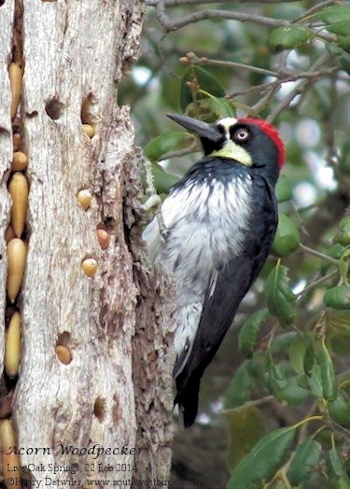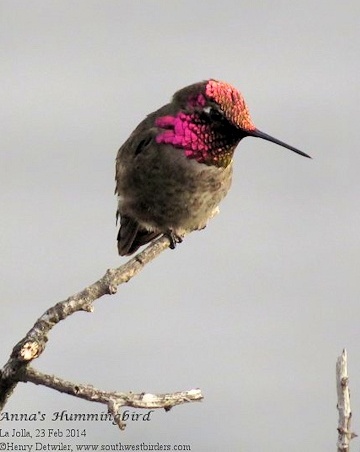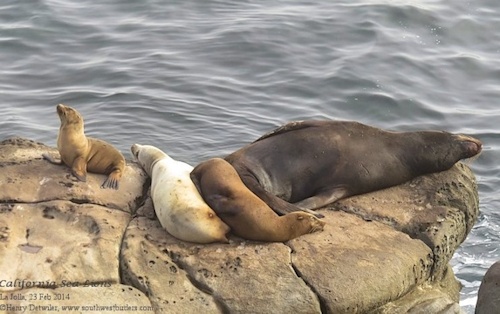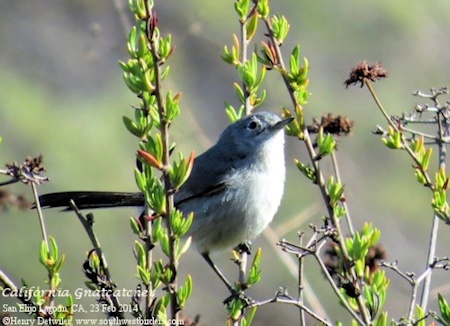Southern California, 21-23 Feb 2014 Salton Sea and Anza Borrego State Park I met Andrew and Cynthia Prezlak early on Friday and we set off on our three-day whirlwind through southern California. Our first stop was a pair of charismatic BURROWING OWLS nesting on Martin Road. Then is was on to Unit 1 of the Sonny Bono Salton Sea NWR. Sandhill Cranes were landing close by in a recently tilled field. It's always a treat to hear their ethereal bugling. From the new observation platform we watched a variety of shorebirds and waterfowl. A single ROSS'S GOOSE was the only visible member of its family. A nice surprise was a MARSH WREN that sang from atop a reed, even allowing scope views. And at the back of one of the waterfowl ponds we spotted that iconic symbol of the west, a coyote! From here we drove west into the Anza Borrego State Park to search for desert species. A nicely displaying Costa's Hummingbird started us out, followed by a smart-looking BLACK-THROATED SPARROW. Back at the Salton Sea we drove the levee road, picking up ducks, grebes, and breeding NEOTROPIC and DOUBLE-CRESTED CORMORANTS. At the headquarters were COMMON GROUND-DOVE, ABERT'S TOWHEE, GAMBEL'S QUAIL, and WHITE-CROWNED SPARROW; unfortunately the palm-roosting Barn Owl was not visible. A ride out to the new geothermal mudpots was easy of the nice and dry dirt track, and the pots were gurgling and spewing mightily. At Finney and Ramer Lakes we connected with another MERLIN and multiple NORTHERN FLICKERS as we watched the sun set over the water. Back in Anza Borrego State Park we made a short hike up to Mountain Palm Springs to see the native fan palms. A pair of CACTUS WRENS At the west end of Jacumba the nesting TRICOLORED BLACKBIRDS made finding these nomadic birds a breeze. Not far away a flock of CALIFORNIA QUAIL gave away their hiding spots under the brush with their soft clucking. Before long we had multiple birds in sight. A confiding flock of BUSHTITS moved through, allowing good views and photos. Our final birds before moving on were the beautiful azure WESTERN BLUEBIRDS and WESTERN SCRUB-JAYS. At Live Oak Springs we ate lunch and watched the LADDER-BACKED WOODPECKERS hunting for bugs and the ACORN WOODPECKERS storing their nuts. Here we also got a fine view of a RED-SHOULDERED HAWK and a tree full of AMERICAN CROWS. The Laguna Mountain Recreation Area also generated many firsts. MOUNTAIN CHICKADEE and PYGMY NUTHATCH cavorted in the tree tops while DARK-EYED JUNCO and SPOTTED TOWHEE fed on the ground. Two FOX SPARROWS called but stayed out of sight. At the visitor center we got excellent looks at STELLER'S JAY, PINE SISKIN, LESSER GOLDFINCH, and a female PURPLE FINCH. Our final stop for the day was Lake Murray, where we added a couple of waterfowl, a CASSIN'S KINGBIRD, and a NUTMEG MANNIKIN. San Diego County On Sunday morning we started out at La Jolla Cove. It was initially very foggy, and we couldn't see much past the rocky shoreline. But soon visibility improved, and we watched the harbor seals, California Sea Lions, cormorants, and pelicans bobbing in the surf. Several pairs of BRANDT'S CORMORANTS were raising chicks on the cliff face. An ANNA'S HUMMINGBIRD was staking out its territory and displaying beautifully. Farther north we hiked down to San Elijo Lagoon, looking for CALIFORNIA GNATCATCHER and other specialties. After a short stretch we found two in a side canyon, one of which even posed for photos! We also got our first looks at AMERICAN WIGEONS, CALIFORNIA TOWHEES, and a male ALLEN'S HUMMINGBIRD feeding on miniscule insects. Half an hour south put us in Imperial Beach, where we checked out the salt flats, the sports park, the Tijuana Estuary marshes, and the beach. We located three BLACK-CROWNED NIGHT HERONS peering down at us from a ficus, a HERMIT THRUSH, and LONG-BILLED CURLEWS. Looking out over the Pacific we tallied RED-BREASTED MERGANSER, RED-THROATED LOON, and WESTERN GREBE. At Dairy Mart Ponds were our first RUDDY DUCKS in breeding plumage. Our final stop of the day was at Robb Field to survey the San Diego River. A few LITTLE BLUE HERONS were new for our trip, and the mudflats were filled with gulls, shorebirds, egrets, and waterfowl. Another beautiful sunset marked the end of our trip. I headed back to Yuma while Andrew and Cynthia prepared for a natural history cruise around the tip of Baja! |
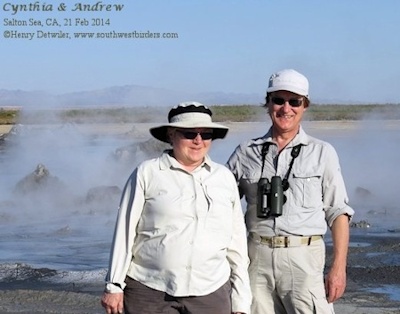
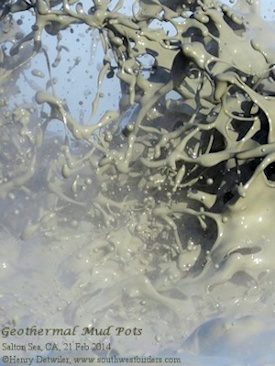 At the Tamarisk Grove Campground we added a number of others: PHAINOPEPLA, BLACK-TAILED GNATCATCHER, BEWICK'S WREN, LESSER GOLDFINCH, SPOTTED TOWHEE, and nest-building VERDIN. The highlights were two striking LAWRENCE'S GOLDFINCHES.
At the Tamarisk Grove Campground we added a number of others: PHAINOPEPLA, BLACK-TAILED GNATCATCHER, BEWICK'S WREN, LESSER GOLDFINCH, SPOTTED TOWHEE, and nest-building VERDIN. The highlights were two striking LAWRENCE'S GOLDFINCHES.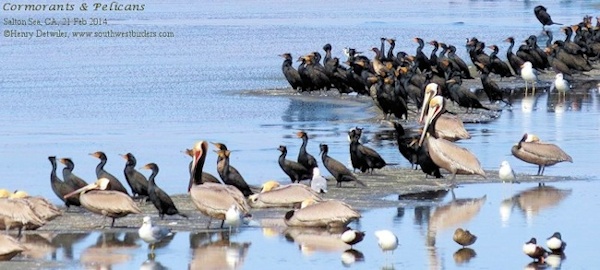
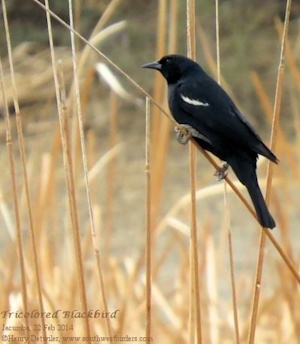 were setting up house in the cholla gardens along the entrance road.
were setting up house in the cholla gardens along the entrance road.